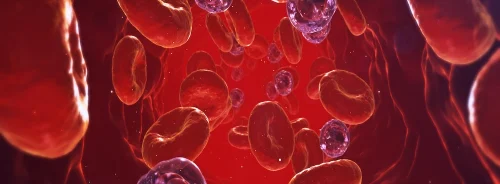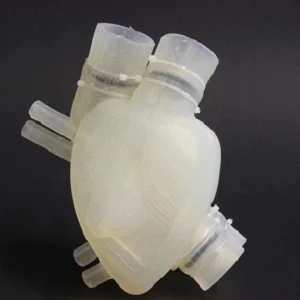A soft artificial heart that beats almost like a human heart has been developed by researchers from ETH Zurich. The artificial heart was created from silicone using a 3D-printing, lost-wax casting technique; it weighs 390 grams and has a volume of 679 cubic centimetres.
A well-functioning artificial heart is a real necessity: about 26 million people worldwide suffer from heart failure while there is a shortage of donor hearts. Artificial blood pumps help to bridge the waiting time until a patient receives a donor heart or their own heart recovers. But currently used blood pumps have many disadvantages: their mechanical parts are susceptible to complications while the patient lacks a physiological pulse, which is assumed to have some consequences for the patient.
The silicone heart was developed by Nicholas Cohrs, a doctoral student in the group led by Wendelin Stark, Professor of Functional Materials Engineering at ETH Zurich. The research team's goal is "to develop an artificial heart that is roughly the same size as the patient's own one and which imitates the human heart as closely as possible in form and function," Cohrs says.
The artificial heart has a right and a left ventricle, just like a real human heart, though they are not separated by a septum but by an additional chamber. This chamber is in- and deflated by pressurised air and is required to pump fluid from the blood chambers, thus replacing the muscle contraction of the human heart, Cohrs explains.
The research team collaborated with colleagues from the Product Development Group Zurich to evaluate the performance of this soft artificial heart. The results of the experiments are published in the scientific journal Artificial Organs.
The researchers proved that the soft artificial heart fundamentally works and moves in a similar way to a human heart. However, it still has one problem: it currently lasts for about only 3,000 beats, which corresponds to a lifetime of half to three quarters of an hour. After that, the material can no longer withstand the strain. As Cohrs explained: "This was simply a feasibility test. Our goal was not to present a heart ready for implantation, but to think about a new direction for the development of artificial hearts." Of course, the tensile strength of the material and the performance would have to be enhanced significantly.
Doctoral students of Product Development Group Zurich, who are working on new technologies for blood pumps, have developed a testing environment with which they can simulate the human cardiovascular system. The researchers of the silicone heart made use of this testing environment for their development process which also included the use of a fluid with comparable viscosity as human blood.
Source: ETH Zurich
Image Credit: Zurich Heart
References:
Cohrs H. Nicholas et al. (2017) A Soft Total Artificial Heart—First Concept Evaluation on a Hybrid Mock Circulation. Artificial Organs. DOI: 10.1111/aor.12956
Latest Articles
artificial heart, Silicone Heart, 3D-printing, ost-wax casting technique
A soft artificial heart that beats almost like a human heart has been developed by researchers from ETH Zurich. The artificial heart was created from silicone using a 3D-printing, lost-wax casting technique; it weighs 390 grams and has a volume of 679 cub






